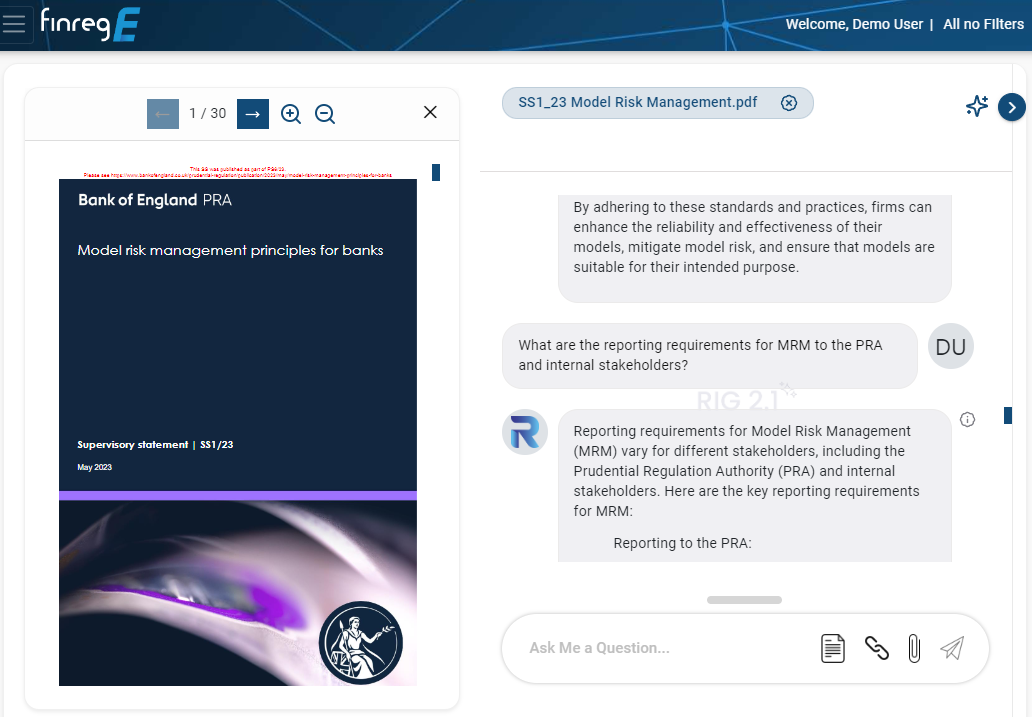The recent past has seen regulatory updates such as the Basel IV framework, Sarbanes-Oxley Act (SOx), OMB A-123, Data Privacy, and Anti-Money Laundering. These have had a substantial impact on compliance management.
With each new ruling or update, banks and other financial institutions responded by expanding compliance procedures, making regulation far more complex and costly than before.
This has led to the unfortunate circumstance that regulation is costly, unwieldy, and inefficient to execute, creating a problem where procedures are far more expensive than they should be.
Moreover, it makes risk management far more difficult because compliance teams have difficulty understanding what regulatory updates are coming and how they could compromise compliance management.
To work around this problem, financial institutions need to leverage a regulatory change management solution to optimise risk management and place them in a better position to mitigate risks and respond better to compliance updates.
Why optimise risk management and what are its benefits?
As bank managers and C-level executives attempt to improve risk management, they resort to developing multiple lines of defence to mitigate compliance risks.
However, reporting procedures, policies, and committee procedures also grow in complexity, which leads to disparate, disjointed processes that are hard to follow instead of a holistic risk management program that can respond to updates.
While the expansion in regulatory teams and procedures was designed to improve risk management, it made compliance more inefficient.
With regulatory procedures becoming more complex and overhead expanding, it becomes harder to respond to regulatory updates, often leaving regulatory teams scrambling to respond to new updates.
Optimising risk management prompts financial institutions to re-examine their compliance procedures with a new goal of improving productivity and reducing costs.
To simplify compliance, organisations had to find a way to cut through the complexity of risk management and improve productivity.
This would require organisations to remove spans and layers that made risk management inefficient and hard to respond to, turning compliance into a more efficient and responsive process.
However, optimising risk is not an easy feat, for it requires specialist knowledge, technical skills, and a team with diverse roles.
Financial institutions have to maintain a diffident balance between the complexity of managing risk while also streamlining the process to make it more responsive and efficient.
How to streamline risk management with regulatory change solutions
Improving risk management requires organisations to adopt multiple strategies. However, the one we will focus on is using regulatory compliance solutions.
These solutions are ideal for optimising the risk management process by giving financial institutions the means to anticipate, capture, and implement regulatory changes in financial regulation.
Word on regulatory updates is spread in different formats, ranging from black-letter laws to announcements and could come from local and global regulatory institutions.
Regulatory change management solutions allow organisations to anticipate, capture, and track regulatory changes, determine their impact on existing company obligations, update controls and implement business changes.
Regulatory change management solutions allow organisations to automate the process, saving time and improving response to regulatory updates.
Most financial institutions rely on manual methods to complete this process, but this is neither practical nor efficient. For example, the UK saw over 5,460 regulatory insights published within six months, making it impossible to keep up with updates at regular intervals.
Furthermore, these solutions make it easier to update the necessary controls and policies within the company.
These solutions leverage automation to assess regulatory content, making it easier to find answers to complex questions such as what changes should be implemented and who is responsible for them.
This streamlines the workload, reduces the burden on regulatory teams and avoids the problem of reporting deficiencies.
Automation also makes it easier to implement company-wide change in businesses.
Regulatory change platforms can facilitate company-wide change procedures, allocating responsibilities to relevant parties, which is critical for simplifying what can be a complicated stage and avoiding mistakes down the line.
Monitoring internal adherence is crucial for implementing regulation in a meaningful way, and change platforms can facilitate this change.
Turning compliance regulation into a responsive, scalable process
Converting compliance regulation into a scalable process is critical for cutting the cost of compliance and improving productivity.
Moreover, it is critical for improving regulation and making it a more agile process, placing organisations in a better position to respond to the latest updates.
Improving response to regulatory procedures will be critical for organisations looking to prevent compliance fines and penalties.


